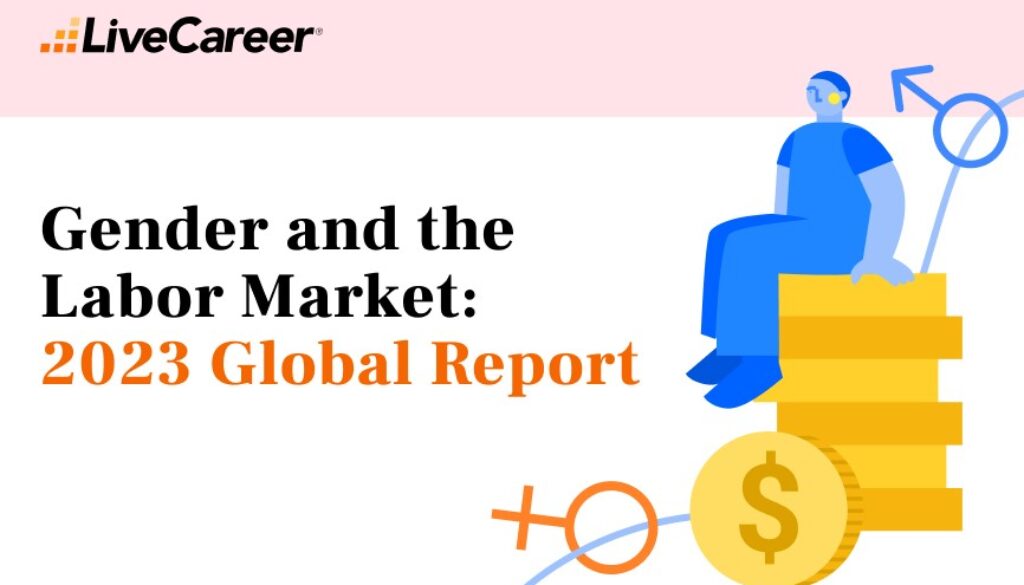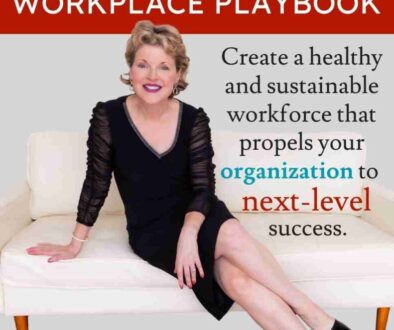The Gender Gap? Women and Men in the Labor Market

This article originally appeared here: The Gender Gap? Women and Men in the Labor Market and was republished here by permission of LiveCareer.
Women can climb career ladders and trees with their children. Still, femininity is not defined by motherhood. At the same time, more and more men are engaged in both professional and family duties. And most don’t need to act macho to feel fulfilled.
Pink is just a color, emotions are for everyone, ambitions have no gender. Though it sounds quite obvious from today’s perspective, injustice continues to haunt workplaces worldwide
At LiveCareer, we used the data from the ILO (International Labour Organization), OECD (Organization for Economic Co-operation and Development, and LP&R (International Network on Leave Policies & Research) to examine the situation of women and men in the global labor market. Does it look the same in different countries? Let’s find out.
First, some recent studies on this topic.
- The Institute for Women’s Policy Research projects that gender pay equity won’t become a reality until 2059.
- According to the 2023 WEF Global Gender Gap Index, no country has yet achieved full gender parity. Iceland, Norway, Finland, New Zealand, Sweden, Germany, Nicaragua, Namibia, and Lithuania are the top 9 countries that have closed at least 80% of their gap.
- According to a 2022 Pew Research Center analysis, American women earned an average of 82% of what men earned. Pay disparity is even greater for women of color, with African American women earning just 60 cents and Latinas earning only 55 cents for every dollar earned by white, non-Hispanic men.
- McKinsey’s 2022 Women in the Workplace report revealed that for every 100 men promoted from entry-level to manager, only 87 women are promoted, and only 82 women of color are promoted.
- Only 8% of Fortune 500 CEOs are women.
- It will take 131 years for the world to close the gender gap, 2023 WEF Global Gender Gap Report shows.
Behind the Paycheck: Global Gender Pay Gap
Let’s check out the difference between men’s and women’s median earnings worldwide.
- Republic of Korea – 79%
- Germany – 03%
- India – 51%
- Australia – 27.71%
- Russia – 27.53%
- Canada – 25.96%
- Argentina – 25.37%
- Italy – 22.75%
- Japan – 22.11%
- Indonesia – 21.63%
- France – 20.95%
- United States of America – 20.41%
- Brazil – 17.25%
- Mexico – 14.26%
- United Kingdom – 14.0%
- South Africa – 13.35%
- Sweden – 9.91%
- Turkey – 56%
- China – 22%
- Saudi Arabia – 80%
Modern women can run a business, run a household, and run marathons. Why so many of them can’t be equally paid, then?
Christy Birmingham-Reyes, Women Empowerment Blogger at When Women Inspire, believes that the main reasons for the current state of affairs are harmful gender stereotypes.
“Gender stereotypes continue to impede progress in reducing the gender wage gap that exists in many industries in North America and elsewhere in the world. That negatively affects how women feel about themselves and their place inside and outside of the workforce, potentially lowering self-esteem, limiting hopes for the future, and affecting overall wellness. The results are detrimental to the woman, her family, her community, and the larger society.”
Is there anything companies can do to create an inclusive work environment where ambition, intelligence, and skills matter more than gender, then?
Kate Zimmer, Executive Recruiting Manager with Discover Financial Services, views pay transparency as the best way to close the gender gap.
“As a talent acquisition professional, I am responsible for being a talent market expert, including understanding complex pay structures and successfully navigating compensation conversations.
Before pay transparency, I often addressed salary preferences upfront in the recruiting process, as I felt it provided job-seekers with a positive candidate experience.
I am pleased to see pay transparency gain momentum and legislative support in the US. Companies across various industries are beginning to include salary ranges in job postings which lead to pay philosophy practices, establishing trust with current and future workforce, and reducing pay gaps. All of these factors and more directly impact a company’s strategy to attract, hire and retain top talent.”
Breaking free from societal expectations and gendered roles is the only way of living fully and in harmony with yourself. After all, we’re primarily human beings. Gender comes second.
Shouldn’t we be able to express ourselves however we want and pursue our aspirations without pressure to follow outdated norms? And doesn’t equality start at work? Let’s find out.
(In)Equality Starts at Work: Gender Employment Gap
The gender employment gap is a complex issue that varies significantly from one country to another due to a number of cultural, social, economic, and policy factors. Let’s have a look.
- Saudi Arabia – 6%
- India – 06%
- Turkey– 49%
- Mexico – 30.65%
- Indonesia – 27.43%
- Brazil – 20.11%
- Argentina – 18.57%
- Italy – 18.1%
- Republic of Korea – 16.59%
- Japan – 11.8%
- South Africa – 9.82%
- United States of America – 9.67%
- Russia – 9.27%
- Germany – 7.43%
- Australia – 6.91%
- United Kingdom – 6.75%
- Canada – 6%
- France – 22%
- Sweden – 75%
Sweden has long been a pioneering promoter of gender equality. Equal power and influence for women and men – that’s what this country is aiming for. A great example for others to follow.
Does Leadership Have Gender?![]()
Intelligence, creativity, and ambition have no gender. Nor should leadership.
Let’s determine whether it’s wishful thinking or today’s workplace reality.
According to the Women in the Workplace 2022 report by McKinsey & Company females are still dramatically underrepresented in leadership roles.
Here’s the representation of women by corporate role and race:
- Entry level: 29% – white women | 19% – women of color [total = 48%]
- Manager: 27% – white women | 14% – women of color [total = 41%]
- Senior manager/director: 26% – white women | 10% – women of color [total = 36%]
- Vice president: 24% – white women | 8% – women of color [total = 32%]
- Senior vice president: 23% – white women | 6% – women of color [total = 29%]
- C-suite: 21% – white women | 5% – women of color [total = 26%]
Additionally, a series of experiments conducted by researchers from Harvard Business School shows that people generally view women as more generous and equality-minded than men—but actually, men and women have similar beliefs and behaviors around these values.
Christine Exley, Harvard Business School Associate Professor, explains that such perceptions could contribute to differences in which jobs you are hired for and what kind of tasks you are assigned
“In cooperative workforces where social skills are highly valued, being seen as nice and equality-oriented could be an advantage. On the other hand, if we’re talking about more competitive workplaces, being seen as nice and equality-oriented could make women less likely to be hired and less likely to be seen as suitable leaders.”
Let’s focus on the share of female managers across the globe now.
- Russia – 0%
- Sweden – 7%
- United States of America – 0%
- Australia – 40.0%
- France – 39.9%
- Brazil – 39.3%
- Mexico – 39.2%
- United Kingdom – 36.8%
- Canada – 35.6%
- South Africa – 32.9%
- Argentina – 32.7%
- Indonesia – 31.7%
- Germany – 28.9%
- Italy – 27.9%
- Saudi Arabia – 19.5%
- Turkey– 18.2%
- India – 6%
- Republic of Korea – 6%
- Japan – 9%
As you can see, there are striking differences between the percentage of women managers in some countries. Understanding them requires a holistic approach that involves changes in cultural norms, policy reforms, awareness and education, and concerted efforts by both the public and private sectors to promote gender diversity and equal opportunities in leadership roles.
Inclusion Starts with Job Listings
Forward-thinking organizations should make it a point of honor to bridge the gender gap.
The broader the candidate pool, the better for your company. Crafting inclusive job postings is a good starting point. Below are some tips on how to do that right.
- Be sure to remove gender bias from job descriptions. Gender-biased job descriptions reduce workplace diversity by creating barriers for certain genders. Also, some words play to female and male stereotypes. Male-sounding words may discourage women from applying. Conversely, men may not be willing to apply for a certain job because of female-sounding words.
- Stick to gender-neutral language. Use gender-neutral posting titles, avoid exclusionary words, and look for neutral alternatives to gendered words. The good news is that you can find many helpful tools online, which will make your task easier.
- Avoid gender bias, but do it wisely. Remember that a job description’s role is to communicate specific skills, knowledge, and abilities needed for a job. Make sure that choosing alternative words doesn’t change the meaning of a job attribute.
As the great Chinese philosopher Lao Tzu said, “The journey of a thousand miles begins with a single step.” And the small things are often the big things.
Breaking the glass ceiling won’t be easy. But it is the time to let actions speak louder than gender.
Sources
- American Association of University Women
- Exley, Ch., L., Hauser, O., P., Moore, M., & Pezzuto, J-H, “Beliefs about Gender Differences in Social Preferences”
- Gupta, S., “Too Nice to Lead? Unpacking the Gender Stereotype That Holds Women Back”
- Haan, K., “Gender Pay Gap Statistics In 2023”
- McKinsey & Company, “Women in the Workplace 2022”
- National Women’s Law Center
- Pew Research Center, “Gender Pay Gap in U.S. Hasn’t Changed Much in Two Decades”
- The International Labour Organization
- The International Network on Leave Policies & Research
- The Organization for Economic Co-operation and Development
- S. Census Bureau, “Income in the United States: 2021”
- Women Business Collaborative
- World Economic Forum, “Global Gender Gap Report 2023”






